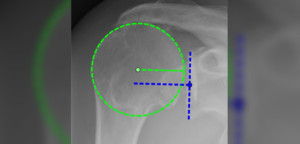 New research from The Steadman Philippon Research Institute has found that arthroscopic rotator cuff repair can be ideal for patients with symptomatic partial thickness rotator cuff tears.
New research from The Steadman Philippon Research Institute has found that arthroscopic rotator cuff repair can be ideal for patients with symptomatic partial thickness rotator cuff tears.
The study, “Five-Year Outcomes After Arthroscopic Repair of Partial-Thickness Supraspinatus Tears,” was published in the January 2018 edition of Arthroscopy.
Peter Millett, M.D., partner at The Steadman Clinic in Vail, Colorado, and co-author on the study, told OTW, “This [partial-thickness supraspinatus tear] is a common condition that is often quite painful. I always wondered how the results after arthroscopic surgery would hold up over time.”
The authors wrote, “The study included 24 shoulders (24 patients comprising 9 women and 15 men). Follow-up data were available on 20 shoulders (7 women and 13 men, 83% follow-up) at a mean of 6 ± 1 years postoperatively. The mean age at index surgery was 55 ± 11 years; 6 bursal- and 14 articular-sided tears were repaired. No patient required revision surgery…”
Dr. Millett commented to OTW, “This study included symptomatic patients who failed conservative measures. All underwent arthroscopic repairs using modern suture anchors techniques and where appropriate double row fixation.”
“This article highlights the outcomes at a minimum of five years after arthroscopic repair of partial thickness tears of the rotator cuff. We were pleased to learn that the patients improved significantly after the surgery, with high satisfaction, low pain scores, and low reoperation rates. We were also excited to learn that the improvements persisted over the course of the study.”
“The most important findings were that the surgery effectively reduced pain and improved patient reported outcomes scores and that the results were durable over time with very low re-tear rates. It is worthwhile to consider arthroscopic rotator cuff repair in patients with symptomatic partial thickness rotator cuff tears.”
“Anatomic repair of partial thickness rotator cuff tears using modern arthroscopic techniques which included double row fixation where needed results in excellent clinical outcomes with decreases in pain, improvements in patient-reported outcomes scores, and high satisfaction scores. The other things to know are that re-tears are uncommon and the results are durable at a minimum of five years follow-up.”
Full Article: Five Year Outcomes After Arthroscopic Repair of Partial Thickness Supraspinatus Tears

